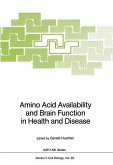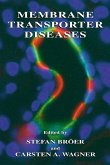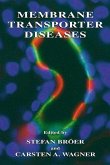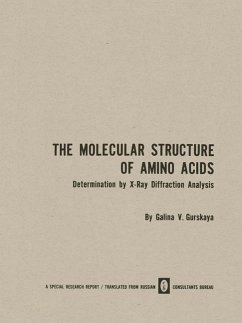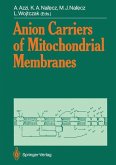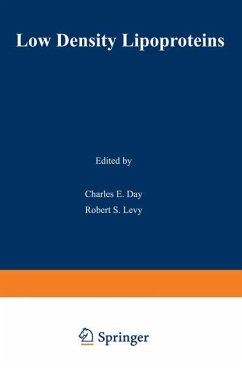- Broschiertes Buch
- Merkliste
- Auf die Merkliste
- Bewerten Bewerten
- Teilen
- Produkt teilen
- Produkterinnerung
- Produkterinnerung
Human epilepsy is a major public health problem affecting approximately 2 persons per 1000. It is particularly frequent in ohildren where convul sions may lead to brain damage and subsequent seizure activity in adulthood. Temporal lobe epilepsy (synonyms include limbic epilepsy. psychomotor epilepsy and complex partial epilepsy) is the most devastating form of epilepsy in the adult population since: a) it is often extremely resistant to currently available anticonvulsant drugs (i.e -- it is more resistant than tonico-clonic or grand mal seizures) and b) it includes loss of consciousness.…mehr
Andere Kunden interessierten sich auch für
![Amino Acid Availability and Brain Function in Health and Disease Amino Acid Availability and Brain Function in Health and Disease]() Amino Acid Availability and Brain Function in Health and Disease121,99 €
Amino Acid Availability and Brain Function in Health and Disease121,99 €![Membrane Transporter Diseases Membrane Transporter Diseases]() Stefan Bröer / Carsten A. Wagner (eds.)Membrane Transporter Diseases186,99 €
Stefan Bröer / Carsten A. Wagner (eds.)Membrane Transporter Diseases186,99 €![Membrane Transporter Diseases Membrane Transporter Diseases]() Membrane Transporter Diseases121,99 €
Membrane Transporter Diseases121,99 €![The Molecular Structure of Amino Acids The Molecular Structure of Amino Acids]() Galina V. GurskayaThe Molecular Structure of Amino Acids38,99 €
Galina V. GurskayaThe Molecular Structure of Amino Acids38,99 €![Anion Carriers of Mitochondrial Membranes Anion Carriers of Mitochondrial Membranes]() Anion Carriers of Mitochondrial Membranes75,99 €
Anion Carriers of Mitochondrial Membranes75,99 €![Natural Sulfur Compounds Natural Sulfur Compounds]() Natural Sulfur Compounds41,99 €
Natural Sulfur Compounds41,99 €![Low Density Lipoproteins Low Density Lipoproteins]() Low Density Lipoproteins81,99 €
Low Density Lipoproteins81,99 €-
-
-
Human epilepsy is a major public health problem affecting approximately 2 persons per 1000. It is particularly frequent in ohildren where convul sions may lead to brain damage and subsequent seizure activity in adulthood. Temporal lobe epilepsy (synonyms include limbic epilepsy. psychomotor epilepsy and complex partial epilepsy) is the most devastating form of epilepsy in the adult population since: a) it is often extremely resistant to currently available anticonvulsant drugs (i.e -- it is more resistant than tonico-clonic or grand mal seizures) and b) it includes loss of consciousness. thereby limiting performance of many normal functions and leaving the individual susceptible to bodily injury. It is also associated with nerve cell loss. in particular in the hippocampus and other structures of the temporal lobes. In order to promote an appropriate therapy it is essential to understand the etiology of seizures and its relationship to brain damage. Basic research on epilepsy alsoprovides a very useful vehicle to learn about the way the brain functions under normal conditions. For instance. much of our present understanding of the mechanisms of action of GABA and benzo diazepines. control of neuronal activity. etc. has been derived from such stUdies.
Hinweis: Dieser Artikel kann nur an eine deutsche Lieferadresse ausgeliefert werden.
Hinweis: Dieser Artikel kann nur an eine deutsche Lieferadresse ausgeliefert werden.
Produktdetails
- Produktdetails
- Advances in Experimental Medicine and Biology 203
- Verlag: Springer / Springer US / Springer, Berlin
- Artikelnr. des Verlages: 978-1-4684-7973-7
- Softcover reprint of the original 1st ed. 1986
- Seitenzahl: 752
- Erscheinungstermin: 26. November 2012
- Englisch
- Abmessung: 254mm x 178mm x 41mm
- Gewicht: 1388g
- ISBN-13: 9781468479737
- ISBN-10: 1468479733
- Artikelnr.: 39916022
- Herstellerkennzeichnung Die Herstellerinformationen sind derzeit nicht verfügbar.
- Advances in Experimental Medicine and Biology 203
- Verlag: Springer / Springer US / Springer, Berlin
- Artikelnr. des Verlages: 978-1-4684-7973-7
- Softcover reprint of the original 1st ed. 1986
- Seitenzahl: 752
- Erscheinungstermin: 26. November 2012
- Englisch
- Abmessung: 254mm x 178mm x 41mm
- Gewicht: 1388g
- ISBN-13: 9781468479737
- ISBN-10: 1468479733
- Artikelnr.: 39916022
- Herstellerkennzeichnung Die Herstellerinformationen sind derzeit nicht verfügbar.
Session I. The Limbic System: Neuroanatomical Concepts Relating to Epileptic Phenomena.- Amygdalohippocampal and Amygdalocortical Projections in the Primate Brain.- Subcortical Projections from the Amygdaloid Complex.- Cortical and Subcortical Afferents of the Amygdaloid Complex.- Putative Amino Acid Transmitters in the Amygdala.- A Survey of the Anatomy of the Hippocampal Formation, With Emphasis on the Septotemporal Organization of its Intrinsic and Extrinsic Connections.- Cytochemical Architecture of the Entorhinal Area.- Session I: Commentary.- Session II. Epileptic Brain Tissue: Neuropathology and Physiology in Animals and Man.- Neuronal and Glial Pathologies: Morphology and Physiology of Human and Monkey Epileptic Foci.- Metabolic, Morphologic and Electrophysiologic Profiles of Human Temporal Lobe Foci: An Attempt at Correlation.- Endogenous Excitotoxins as Possible Mediators of Ischemic and Hypoglycemic Brain Damage.- Role of the Substantia Nigra in the Kindling Model of Limbic Epilepsy.- Long Term Sequelae of Parenteral Administration of Kainic Acid.- Electrophysiology of Epileptic Tissue: What Pathologies are Epileptogenic?.- Session III. Excitatory Amino Acids and the Blood-Brain Barrier.- Pathophysiological Aspects of Blood-Brain Barrier Permeability in Epileptic Seizures.- Blood-Brain Barrier Permeability to Excitatory Amino Acids.- Limbic Seizures Induced by Systemically Applied Kainic Acid: How Much Kainic Acid Reaches the Brain?.- Extravasated Protein as a Cause of Limbic Seizure-Induced Brain Damage: An Evaluation Using Kainic Acid.- Ultrastructural Analysis of Rat Brain Tissue Following Systemic Kainate Administration.- Session III: Commentary.- Session IV. Excitatory Amino Acids: Receptor Interactions.- Anatomical Organization of Excitatory Amino AcidReceptors and their Properties.- Homocysteic Acid, an Endogenous Agonist of NMDA-Receptor: Release, Neuroactivity, and Localization.- Excitatory Amino Acid Pathways in the Brain.- Synthesis and Release of Amino Acid Transmitters.- Na+ Fluxes as a Tool to Identify Anticonvulsant Antagonists of Neuroexcitation.- Involvement of Excitatory Amino Acid Receptors in the Mechanisms Underlying Excitotoxic Phenomena.- Session IV: Commentary.- Session V. Excitatory Amino Acids and Seizures: Neurochemical Interrelationships.- Excitatory Amino Acid Antagonists as Novel Anticonvulsants.- The Hyperexcited Brain: Glutamic Acid Release and Failure of Inhibition.- Anti.-Excitotoxic Actions of Taurine in the Rat Hippocampus Studied In Vivo and In Vitro.- Alterations in Extracellular Amino Acids and Ca2+ Following Excitotoxin Administration and During Status Epilepticus.- Acidic Peptides in Brain: Do They Act at Putative Glutamatergic Synapses?.- Session V: Commentary.- Session VI. Mechanisms of Epileptogenesis.- Synaptic Events Underlying Spontaneous and Evoked Paroxysmal Discharges in Hippocampal Neurons.- Inward Currents in Cat Neocortical Neurons Studied In Vitro.- Synchronization of Pyramidal Cell Firing by Ephaptic Currents in Hippocampus In Situ.- Excitatory Amino Acids and Regenerative Activity in Cultured Neurons.- Long-Term Alterations in Amino Acid-Induced Ionic Conductances in Chronic Epilepsy.- Excitatory Amino Acids and Epilepsy-Induced Changes in Extracellular Space Size.- Session VI: Commentary.- Session VII. Excitatory Amino Acids: Physiological Studies.- Evidence for the Activation of the N-Methyl-D-Aspartate Receptor During Epileptiform Discharge.- Effects of Kainate on CA1 Hippocampal Neurons Recorded In Vitro.- Blockade by D-Aminophosphonovalerate or Mg2+ of ExcitatoryAmino Acid-Induced Responses on Spinal Motoneurons In Vitro.- The Membrane Action of Excitatory Amino Acids on Cultured Mouse Spinal Cord Neurons.- A Patch-Clamp Study of Excitatory Amino Acid Activated Channels.- Amino Acid Activated Receptor-Channels at Peripheral and Central Synapses.- Expression of Vertebrate Amino Acid Receptors in Xenopus Oocytes.- Session VII: Commentary.- Session VIII. Metal Ions and Epilepsy.- Transition Metal Ions in Epilepsy: An Overview.- Zinc-Binding Proteins in the Brain.- Neurobehavioral, Neuroendocrine and Neurochemical Effects of Zinc Supplementation in Rats.- Excitatory Amino Acids and Divalent Cations in the Kindling Model of Epilepsy.- Effect of Zinc on Neuronal Activity in the Rat Forebrain.- Relationship of Glutamic Acid and Zinc to Kindling of the Rat Amygdala: Afferent Transmitter Systems and Excitability in a Model of Epilepsy.- Session VIII: Commentary.- Session IX. Seizures and Brain Damage: The Excitotoxic Link.- Inciting Excitotoxic Cytocide Among Central Neurons.- Selective and Non-selective Seizure Related Brain Damage Produced by Kainic Acid.- On the Role of Seizure Activity and Endogenous Excitatory Amino Acids in Mediating Seizure-Associated Hippocampal Damage.- Kainic Acid Seizures and Neuronal Cell Death: Insights from Studies of Selective Lesions and Drugs.- Glutamate and Anoxic Neuronal Death In Vitro.- Quinolinic Acid: A Pathogen in Seizure Disorders?.- Session IX: Commentary.- Contributors.
Session I. The Limbic System: Neuroanatomical Concepts Relating to Epileptic Phenomena.- Amygdalohippocampal and Amygdalocortical Projections in the Primate Brain.- Subcortical Projections from the Amygdaloid Complex.- Cortical and Subcortical Afferents of the Amygdaloid Complex.- Putative Amino Acid Transmitters in the Amygdala.- A Survey of the Anatomy of the Hippocampal Formation, With Emphasis on the Septotemporal Organization of its Intrinsic and Extrinsic Connections.- Cytochemical Architecture of the Entorhinal Area.- Session I: Commentary.- Session II. Epileptic Brain Tissue: Neuropathology and Physiology in Animals and Man.- Neuronal and Glial Pathologies: Morphology and Physiology of Human and Monkey Epileptic Foci.- Metabolic, Morphologic and Electrophysiologic Profiles of Human Temporal Lobe Foci: An Attempt at Correlation.- Endogenous Excitotoxins as Possible Mediators of Ischemic and Hypoglycemic Brain Damage.- Role of the Substantia Nigra in the Kindling Model of Limbic Epilepsy.- Long Term Sequelae of Parenteral Administration of Kainic Acid.- Electrophysiology of Epileptic Tissue: What Pathologies are Epileptogenic?.- Session III. Excitatory Amino Acids and the Blood-Brain Barrier.- Pathophysiological Aspects of Blood-Brain Barrier Permeability in Epileptic Seizures.- Blood-Brain Barrier Permeability to Excitatory Amino Acids.- Limbic Seizures Induced by Systemically Applied Kainic Acid: How Much Kainic Acid Reaches the Brain?.- Extravasated Protein as a Cause of Limbic Seizure-Induced Brain Damage: An Evaluation Using Kainic Acid.- Ultrastructural Analysis of Rat Brain Tissue Following Systemic Kainate Administration.- Session III: Commentary.- Session IV. Excitatory Amino Acids: Receptor Interactions.- Anatomical Organization of Excitatory Amino AcidReceptors and their Properties.- Homocysteic Acid, an Endogenous Agonist of NMDA-Receptor: Release, Neuroactivity, and Localization.- Excitatory Amino Acid Pathways in the Brain.- Synthesis and Release of Amino Acid Transmitters.- Na+ Fluxes as a Tool to Identify Anticonvulsant Antagonists of Neuroexcitation.- Involvement of Excitatory Amino Acid Receptors in the Mechanisms Underlying Excitotoxic Phenomena.- Session IV: Commentary.- Session V. Excitatory Amino Acids and Seizures: Neurochemical Interrelationships.- Excitatory Amino Acid Antagonists as Novel Anticonvulsants.- The Hyperexcited Brain: Glutamic Acid Release and Failure of Inhibition.- Anti.-Excitotoxic Actions of Taurine in the Rat Hippocampus Studied In Vivo and In Vitro.- Alterations in Extracellular Amino Acids and Ca2+ Following Excitotoxin Administration and During Status Epilepticus.- Acidic Peptides in Brain: Do They Act at Putative Glutamatergic Synapses?.- Session V: Commentary.- Session VI. Mechanisms of Epileptogenesis.- Synaptic Events Underlying Spontaneous and Evoked Paroxysmal Discharges in Hippocampal Neurons.- Inward Currents in Cat Neocortical Neurons Studied In Vitro.- Synchronization of Pyramidal Cell Firing by Ephaptic Currents in Hippocampus In Situ.- Excitatory Amino Acids and Regenerative Activity in Cultured Neurons.- Long-Term Alterations in Amino Acid-Induced Ionic Conductances in Chronic Epilepsy.- Excitatory Amino Acids and Epilepsy-Induced Changes in Extracellular Space Size.- Session VI: Commentary.- Session VII. Excitatory Amino Acids: Physiological Studies.- Evidence for the Activation of the N-Methyl-D-Aspartate Receptor During Epileptiform Discharge.- Effects of Kainate on CA1 Hippocampal Neurons Recorded In Vitro.- Blockade by D-Aminophosphonovalerate or Mg2+ of ExcitatoryAmino Acid-Induced Responses on Spinal Motoneurons In Vitro.- The Membrane Action of Excitatory Amino Acids on Cultured Mouse Spinal Cord Neurons.- A Patch-Clamp Study of Excitatory Amino Acid Activated Channels.- Amino Acid Activated Receptor-Channels at Peripheral and Central Synapses.- Expression of Vertebrate Amino Acid Receptors in Xenopus Oocytes.- Session VII: Commentary.- Session VIII. Metal Ions and Epilepsy.- Transition Metal Ions in Epilepsy: An Overview.- Zinc-Binding Proteins in the Brain.- Neurobehavioral, Neuroendocrine and Neurochemical Effects of Zinc Supplementation in Rats.- Excitatory Amino Acids and Divalent Cations in the Kindling Model of Epilepsy.- Effect of Zinc on Neuronal Activity in the Rat Forebrain.- Relationship of Glutamic Acid and Zinc to Kindling of the Rat Amygdala: Afferent Transmitter Systems and Excitability in a Model of Epilepsy.- Session VIII: Commentary.- Session IX. Seizures and Brain Damage: The Excitotoxic Link.- Inciting Excitotoxic Cytocide Among Central Neurons.- Selective and Non-selective Seizure Related Brain Damage Produced by Kainic Acid.- On the Role of Seizure Activity and Endogenous Excitatory Amino Acids in Mediating Seizure-Associated Hippocampal Damage.- Kainic Acid Seizures and Neuronal Cell Death: Insights from Studies of Selective Lesions and Drugs.- Glutamate and Anoxic Neuronal Death In Vitro.- Quinolinic Acid: A Pathogen in Seizure Disorders?.- Session IX: Commentary.- Contributors.


